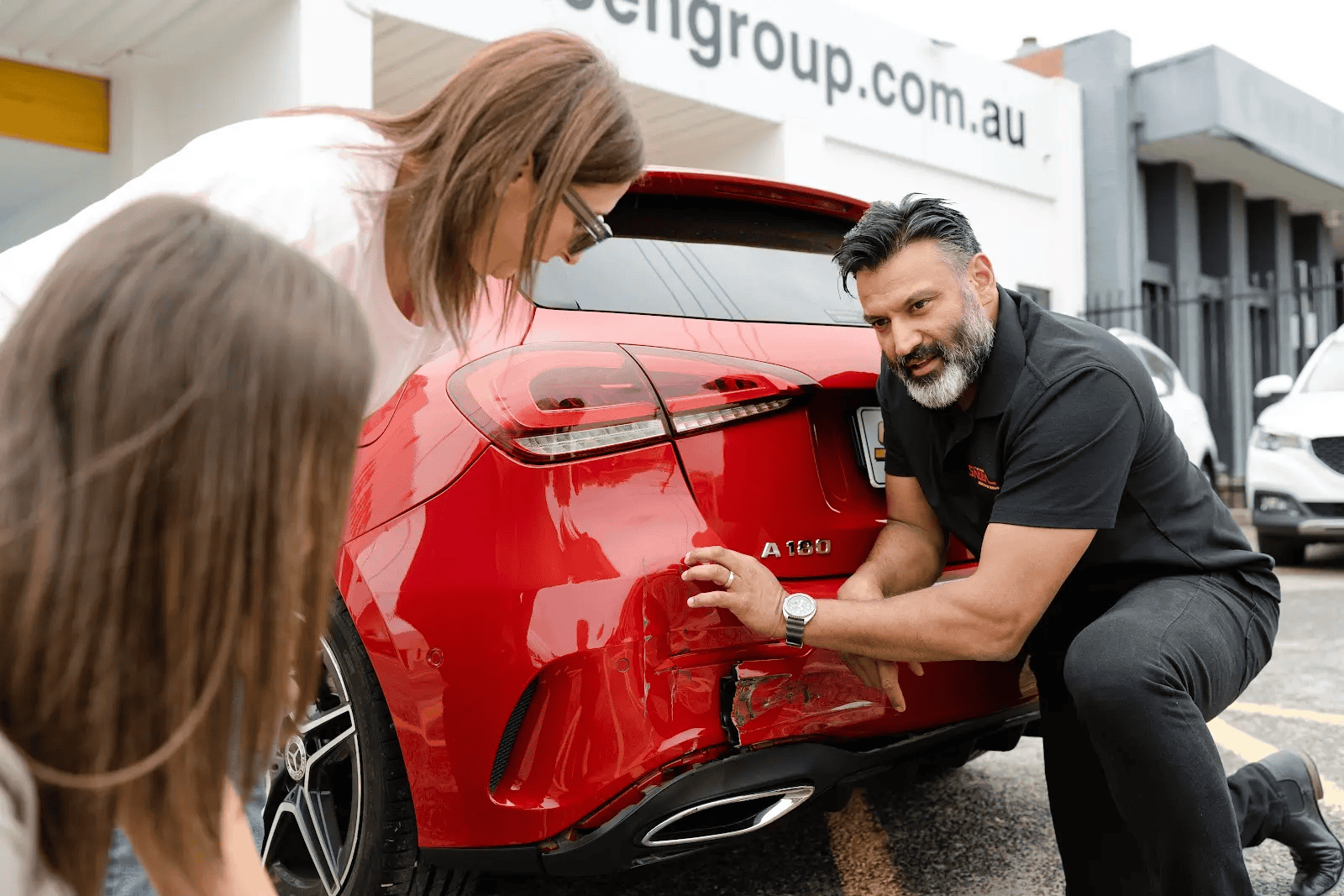Sheen Resources


We know it’s important to review documentation when you're buying car insurance. But with so much to review, you don't want to accidentally miss the key points. Watch this quick video about car insurance, we highlight what you should look out for when reviewing the Product Disclosure Statement (PDS).
7 things to check in your PDS
A Product Disclosure Statement (PDS) is a document that explains the details of a financial product, such as an insurance policy. The PDS explains what it covers and what it doesn’t; it’s the important legal document that contains the terms and conditions you need to know before you buy.
For your car insurance, the PDS is your roadmap to understanding exactly what you’re paying for, and just as importantly, what you’re not.
Under Australian law, insurers are required to provide a PDS to all retail clients before purchase. It’s regulated by the Australian Securities and Investments Commission (ASIC) to ensure that consumers can make an informed decision. The PDS gives you all the key information about the policy’s features, limitations, exclusions, benefits, and any significant risks.
It’s important not to confuse the PDS with your Certificate of Insurance. While the Certificate lists the specific details of your cover, such as your premium, excess, and listed drivers, the PDS sets out the terms and scope of what the policy actually covers across the board.
Think of the PDS as the fine print that can save you thousands if you take the time to read it. It’s the key to avoiding surprises down the line, especially if you need to make a claim. Need help understanding your cover? See how Sheen works with your provider after an accident.
Car insurance basics: understanding your policy and documentation
Before diving into your PDS, it’s helpful to get clear on the basics of car insurance. In Australia, there are three main types of car insurance policies. Compulsory Third Party (CTP) is legally required in every state and territory. It covers injury to other people in an accident you cause, but not damage to vehicles or property. Third Party Property Insurance covers damage to other people’s property, including their cars, but it won’t pay for repairs to your own vehicle. Comprehensive insurance is the highest level of cover: it protects both your car and others, including fire, theft, weather, and vandalism.
There are two key financial components to every policy: your premium and your excess. The premium is the amount you pay to keep your policy active. It’s usually charged annually, although many insurers offer monthly options. The excess is the amount you pay out of pocket when making a claim: it’s your contribution toward the repair bill before your insurer steps in.
Finally, there are two important documents you’ll receive when you take out insurance. The Certificate of Insurance confirms your specific details, such as the agreed value, excess amounts, and who’s covered. The PDS provides the full breakdown of your policy’s inclusions, exclusions, and rules. It may also include important information about dispute resolution processes, fees and costs, and how to make a complaint.
How to access and read your car insurance Product Disclosure Statement document
If you’re shopping around for car insurance or already have a policy in place, accessing your PDS is usually straightforward. Most product issuers make the PDS available during the quote process, and it should also be accessible via your online account or mobile app once your policy is active. If you prefer a hard copy, you can request one directly from your insurer.
To read the PDS effectively, start by identifying the sections that are most relevant to your situation, especially anything related to claims, exclusions, driver conditions, and optional extras. You can use your browser’s search function (CTRL+F or Command+F) to quickly find terms like “excess,” “modifications,” or “repairer.” Highlight or make notes on anything you’re unsure about, and don’t hesitate to contact your insurer for clarification. This small step now can help you understand the coverage and avoid issues if you ever need to make a claim.

PDS check: 7 things to review in your car insurance PDS
1. What your policy covers
The first thing to look for in your PDS is what the policy actually covers. Comprehensive policies may include cover for accidental damage, fire, theft, weather events, and malicious damage, while third party policies may only fund cover for damage to other vehicles. The PDS will also explain whether your policy covers the market value of your car or an agreed value. If your car is written off in an accident and you’ve selected market value, the payout could be significantly lower than what you paid or what you need to replace it. Checking this early helps avoid any nasty surprises later.
2. Excess and excess types
Next, review the section about excess. This includes your basic excess (the standard amount you’ll pay in most claims), but also any additional excesses that could apply. These might be based on age, licence status, or driving history. For example, younger drivers may have a higher age excess, while unlisted drivers could trigger an additional unlisted driver excess. Your PDS will explain how these are calculated and when they apply. The document that contains these rules will also clarify how adjusting your excess could affect your premium.
3. Listed and unlisted drivers
If multiple people drive your car, it’s essential to understand the implications of listed versus unlisted drivers. Your PDS will outline whether additional excesses apply if someone not listed on your policy is involved in an incident. In many cases, insurers impose higher excesses for unlisted drivers, especially if they’re under 25. However, there are usually exceptions for learner drivers, provided they’re supervised by a fully licensed driver. Make sure all regular drivers are listed to avoid penalties.
4. Policyholder benefits and optional extras
A good PDS will detail the extra benefits that come with your policy. Comprehensive insurance could include cover for personal items stolen from the car, emergency repairs, vehicle towing, and even replacement of lost keys. Some insurers offer optional extras for an added fee, such as hire car cover (by the way, we’ll sort you out with an accident replacement vehicle for free) while your vehicle is being repaired, or no-claim discount protection. These options may not be included as standard, so it’s important to check whether they’re automatically included or if you need to add them. These extras are often described as disclosure documents within the broader product information.
5. Cover for modifications
If your vehicle has modifications (whether cosmetic, performance-related, or functional), you need to understand how these are treated in your policy. Most insurers won’t cover modifications unless they’ve been declared and accepted. Your PDS should explain which modifications are covered, how they’re assessed, and whether they affect your premium or excess. If modifications aren’t listed on your Certificate of Insurance, you may not be covered for their repair or replacement. This is particularly important to consider whether it is appropriate for your personal circumstances.
6. Choice of repairer
One important but often overlooked detail in your PDS is whether you have the choice of repairer. Some policies automatically assign you to a preferred repairer (a shop the insurer works with), while others allow you to choose your own. Preferred repairers may be convenient, but you might prefer the transparency and quality control of selecting a trusted panel beater. Your PDS should clearly state whether you have this option and what it means in the event of a claim.
7. Discounts and rewards
Finally, check the PDS for any discount programs or reward incentives. Some insurers offer a no-claim bonus, which is a discount on your premium for maintaining a clean driving record. Others may provide a multi-policy discount if you also hold home or contents insurance with the same company. These discounts can significantly reduce your overall premium, but the criteria and retention rules will be outlined in the PDS. Always read the PDS and financial services guide (FSG) together before making a decision to purchase.

Why understanding your PDS helps when making a claim
The true value of a PDS becomes clear when you need to make a claim. If you haven’t reviewed your cover properly, you might find yourself dealing with delays, disputes, or unexpected out-of-pocket costs. For example, if you’ve made modifications to your vehicle that weren’t disclosed, your insurer may refuse to cover the full cost of repairs. Or if you assumed you had a choice of repairer but didn’t, you could be directed to a workshop you’re not comfortable with. Understanding the purpose of a PDS ahead of time gives you greater control and reduces stress during an already difficult moment. If you need advice from a qualified financial adviser, your insurer must provide information to help you understand the policy before you buy.
A final PDS check-before-you-buy
Your PDS is one of the most important documents you'll receive as part of your car insurance policy. It’s where the fine print lives, but it’s also where your real protection begins. Taking a few minutes to go through your PDS before you buy or renew can prevent major headaches if you ever need to make a claim. Below is a quick checklist to help you review the most important details.
- Understand what type of cover you’re buying — comprehensive or third party.
- Confirm whether your car is covered for market value or agreed value.
- Know what excess you’ll pay, and any age- or driver-based additions.
- Look for exclusions, especially around modifications or unlisted drivers.
- Review optional extras like hire car cover or no-claim bonus protection.
- Make sure you’re clear on anything that could affect a future claim, including whether the product’s features meet your objective.
[sheen_usps][/sheen_usps]
Choose a smash repairer that understands your policy
We aim to take the stress out of the insurance process. Our experienced team works with all major insurers and understands what’s in your policy, from excess conditions to approved repair procedures. We’ll communicate with your insurer, handle the paperwork, and make sure you’re getting the insurance claim service you’re entitled to. With convenient Sheen locations across Melbourne and a reputation built over decades, Sheen is the smash repairer you can trust when it matters most. With Sheen, you get more than repairs — you get insurance clarity, too.

.png)


.webp)

.webp)














